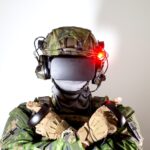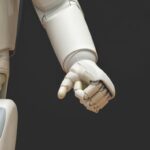Introduction
Imagine a world where machines can see and understand the world as humans do. Where computers can identify and process images just like our eyes and brains. It may sound like science fiction, but it’s rapidly becoming a reality thanks to computer vision technology. Computer vision is a field of artificial intelligence (AI) that trains computers to interpret and understand the visual world. By using digital images from cameras and videos and deep learning models, machines can accurately identify and classify objects and then react to what they see. In this post, we will delve into the various practical applications of computer vision, and how these can enhance businesses and industries in ways never before imagined.
Healthcare
One of the most significant applications of computer vision is in healthcare. AI-powered solutions can accurately detect diseases such as cancer at an early stage, improving patient outcomes. For instance, Google’s DeepMind Health project is using computer vision to train AI to detect cancerous tissues at an early stage. Similarly, PathAI is developing machine learning technology to aid pathologists in making more accurate diagnoses.
Furthermore, computer vision can assist in surgical procedures. An example of this is the da Vinci Surgical System, which allows surgeons to perform complex surgeries with greater precision, flexibility, and control. The system uses computer vision to provide a high-definition, 3D view of the surgical site, enabling surgeons to carry out highly precise operations.
Retail
Computer vision is transforming the retail industry by enhancing customer experience and improving operational efficiency. Amazon Go stores are a prime example of how computer vision and AI are revolutionizing retail. These cashier-less stores use computer vision, sensor fusion, and deep learning to automate much of the purchase, checkout, and payment steps associated with retail transaction.
Additionally, computer vision can help retailers understand customer behavior. By analyzing customers’ movements, facial expressions, and even their shopping patterns, retailers can gain insights into their preferences and tailor their offerings accordingly. This application of computer vision can significantly improve customer satisfaction and result in increased sales.
Autonomous Vehicles
One of the most exciting applications of computer vision is in the realm of autonomous vehicles. Self-driving cars rely heavily on computer vision to navigate safely around obstacles, interpret traffic signals, and understand the road ahead. Waymo, Google’s self-driving car project, uses computer vision along with LiDAR (Light Detection and Ranging) technology to detect pedestrians, cyclists, vehicles, and more from up to 300 yards away.
Computer vision also assists in enhancing the safety of traditional cars. Features like lane-departure warnings, adaptive cruise control, and automatic emergency braking all rely on computer vision technology to make our roads safer.
Future Implications
Computer vision is already making a significant impact across various sectors, and its potential is only set to grow. According to a report by Markets and Markets, the computer vision market is expected to reach $19.1 billion by 2025, up from $10.9 billion in 2019. This growth will be driven by increasing demand for AI applications, the rise of Industry 4.0, and advancements in machine learning technologies.
The future of computer vision also promises exciting developments like advanced surveillance systems that can detect suspicious behavior, drones that can help in disaster management, and AI-powered personal assistants that can understand and respond to visual cues. These advancements will not only revolutionize various industries but also have the potential to transform our daily lives.
Conclusion
Computer vision represents a significant leap forward in our ability to harness the potential of AI. From healthcare to retail, to autonomous vehicles, the practical applications of this technology are vast and far-reaching. For businesses, adopting computer vision can result in improved efficiency, enhanced customer experience, and a competitive edge in the market.
As we look to the future, it’s clear that computer vision will play a pivotal role in shaping our world. The possibilities are limited only by our imagination, and it’s an exciting time to be a part of this technological revolution.




